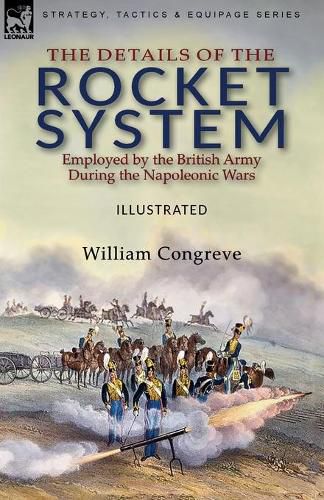Readings Newsletter
Become a Readings Member to make your shopping experience even easier.
Sign in or sign up for free!
You’re not far away from qualifying for FREE standard shipping within Australia
You’ve qualified for FREE standard shipping within Australia
The cart is loading…






This title is printed to order. This book may have been self-published. If so, we cannot guarantee the quality of the content. In the main most books will have gone through the editing process however some may not. We therefore suggest that you be aware of this before ordering this book. If in doubt check either the author or publisher’s details as we are unable to accept any returns unless they are faulty. Please contact us if you have any questions.
Congreve’s own work on the effectiveness and operation of his rockets
In 1814 British Guards officer Rees Gronow took part in the Peninsula War action known as ‘The Passage of the River Adour’. He wrote of his experiences during that battle in his reminiscences; ‘Three or four regiments of French infantry were approaching rapidly when a well-directed fire of rockets fell amongst them. The consternation of the Frenchmen was such when these hissing, serpent-like projectiles descended, that a panic ensued and they retreated’. Congreve’s invention had come to the battlefield. Though many of his contemporaries were either suspicious of his innovation or contemptuous of its potential, such was the effectiveness of well managed rockets that military arsenals would include them thereafter. Congreve’s book describes his early rockets, the formation, equipment and practices of ‘rocket troops’ and the various applications for the use of rockets in different military scenarios. This Leonaur edition contains the illustrations which originally appeared in the book plus additional illustrations of early rocket troops. This is an essential book for those interested in the development of rocket warfare and for modellers, war-gamers and re-enactors.
Leonaur editions are newly typeset and are not facsimiles; each title is available in softcover and hardback with dustjacket.
$9.00 standard shipping within Australia
FREE standard shipping within Australia for orders over $100.00
Express & International shipping calculated at checkout
This title is printed to order. This book may have been self-published. If so, we cannot guarantee the quality of the content. In the main most books will have gone through the editing process however some may not. We therefore suggest that you be aware of this before ordering this book. If in doubt check either the author or publisher’s details as we are unable to accept any returns unless they are faulty. Please contact us if you have any questions.
Congreve’s own work on the effectiveness and operation of his rockets
In 1814 British Guards officer Rees Gronow took part in the Peninsula War action known as ‘The Passage of the River Adour’. He wrote of his experiences during that battle in his reminiscences; ‘Three or four regiments of French infantry were approaching rapidly when a well-directed fire of rockets fell amongst them. The consternation of the Frenchmen was such when these hissing, serpent-like projectiles descended, that a panic ensued and they retreated’. Congreve’s invention had come to the battlefield. Though many of his contemporaries were either suspicious of his innovation or contemptuous of its potential, such was the effectiveness of well managed rockets that military arsenals would include them thereafter. Congreve’s book describes his early rockets, the formation, equipment and practices of ‘rocket troops’ and the various applications for the use of rockets in different military scenarios. This Leonaur edition contains the illustrations which originally appeared in the book plus additional illustrations of early rocket troops. This is an essential book for those interested in the development of rocket warfare and for modellers, war-gamers and re-enactors.
Leonaur editions are newly typeset and are not facsimiles; each title is available in softcover and hardback with dustjacket.